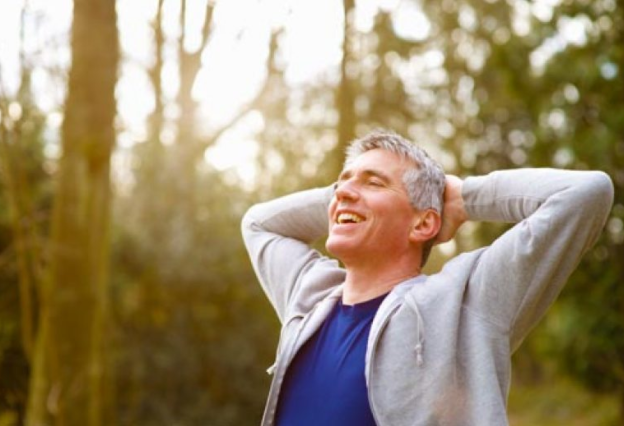The ancient sage Patanjali defined yoga as a state of mind in which all our conscious and unconscious patterns of belief quieten down. It’s the process of letting go of all the things you think (or subconsciously believe) about the world so that you can see things as they truly are.
That’s not something most of us can do at the drop of a hat, which is why Patanjali gives us an 8-step program for moving towards that state of absolute clarity – the Eight Limbs of Yoga.
The first two steps, Yama and Niyama, are guidelines for living a good life with clean living and healthy relationships at the top of the agenda. Next, Patanjali tells us to practice the aspects of yoga that are most familiar to Western students– asana (poses) and pranayama (breathing techniques). We’re then asked to switch off from external distractions and move through the three stages of meditation, ending in Samadhi – the state of blissful awareness that we experience when all the mental noise and habits stop.
The first seven steps are all preparation for that final state of transcendent bliss, but we often don’t approach our yoga practice in that way. Asana becomes a form of exercise, novelty or distraction rather than preparation for a practice that promises to deliver the peace and clarity that we’re craving. So how do we approach asana in a way that makes it an effective part of our journey towards Samadhi? By putting the breath at the very heart of every practice.
There are numerous physical and psychological roadblocks standing in between where you are right now and the state of calm bliss you’re aiming for. Patanjali tells us that pranayama gets rid of these blocks, making it possible to achieve the goals of meditation. In other words, pranayama is the ideal preparation for meditation. And asana, when practiced with the right intention and techniques, is the perfect preparation for pranayama.
While most yoga classes advocate ‘moving the body with the breath’, that’s virtually impossible when students are forced to synchronise their movements with the pace of the teacher’s demonstration or the beat of a soundtrack. We all have different breathing rates and the only way to move the body in time with the breath is to go at your own pace. In many vinyasa classes, that’s not an option. How can students follow their breath with integrity, immerse themselves in mindful movement and practice in a way that avoids injury if they’re simply focusing on copying, and keeping up with, the teacher at the front?
So how can yoga teachers and students put the breath squarely at the heart of asana practice? There are a number of approaches used in yoga therapy that can help us to do that, including (but not limited to):
- Slow down – go at your own pace. If you’re a yoga teacher, try allowing your students to follow their own breath rather than your cues. If you keep your sequences simple and demonstrate before asking students to practice, it’s easier than you might think.
- Practice Ujjayi Breathing – this audible ‘throat breath’ keeps the breathing at the centre of your attention.
- The 4 Part Breath – pay attention to each inhale, exhale and the pauses between the two.
- Move the body according to the mechanics of the breath – the breath moves the body, not the other way around.
- Place each movement INSIDE the breath – start the breath before the movement starts and finish the breath after the movement is complete.
- Use breathing ratios– count the inhale, exhale and pauses.
- Use sound while practicing asana – chant mantras or other sounds while performing yoga poses to make the breath more audible and therefore easier to notice and experience.
When we place the breath at the heart of our asana practice, we can prepare the body and mind for pranayama and meditation. We can also achieve specific therapeutic effects. For example, chanting while practicing vinyasa extends the exhale, focuses the mind and, when teamed with langhana (reducing/calming) poses, can have a calming effect on the student.
When our yoga practice connects movement, breath, sound and meditation in practices, we can effectively create the conditions for moving into a state of focused awareness. Practicing in this way can also highlight the need for individualized practices as we learn more about our bodies, minds and breathing patterns.
Perfecting tricky asanas is fun. Working with the breath is profound. And putting it all together with the intention of moving towards the state of yoga is transformational.
Try this simple practice breath-based practice with Nikola Ellis.

